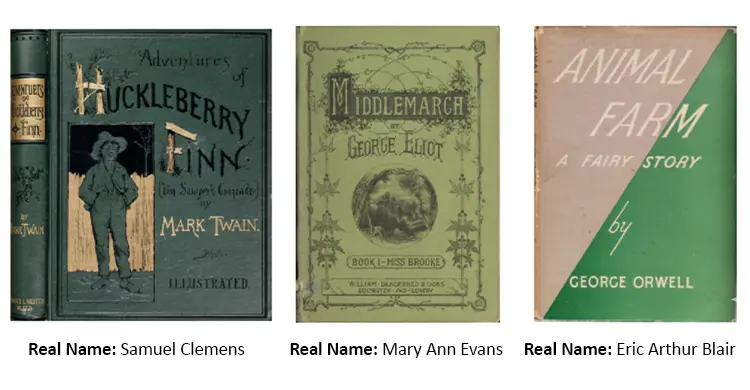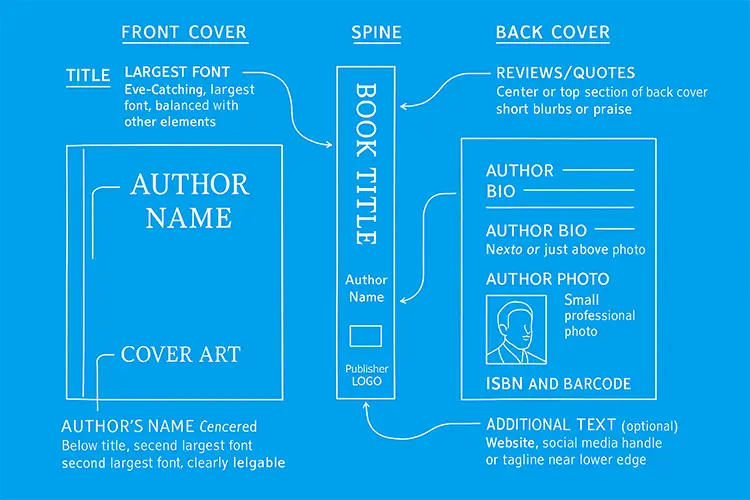How to Write a Play: Step-by-Step Guide 2025
Learn how to write a play with our 2025 step-by-step guide for students. Master playwriting structure, dialogue, and tips for academic success.
Writing a book is an overwhelming journey where authors deal with different emotions, ideas, thoughts, edits, and countless hours of collecting them in a manner to come up with an extraordinary story to convey. Since the story of the book cannot be revealed until the reader reads, how would you consider the book and the author to read? That is when my students must know how to write your name on a book. Yes, unlike several other aspects, it also plays a crucial role in the book’s presentation and how the readers will interact. It is more than a scribble; it is the legal, physical procedure of asserting the property of even the narrative you have given life to. With the world becoming more and more dominated by digital files, this small act links you, the writer, with the physical paper and ink that is carrying your story.
Whether it comes to the best practices of penmanship or what to keep in mind when you sign copies to friends, fans, or to yourself, in your publication’s personal copybook, I will make sure that your signature is not only legible, but meaningful, a permanent mark that certifies you as a writer to a published author.
Authors usually have two choices to present themselves to their readers. They have Real and Pen names, and both are significant on their own and form a different connection with the readers. The decision of using your real name or author pen name is one of the key branding strategies that identify yourself as a publicly recognized author. Both the names form different associations, authenticity, and creative persona, and flexibility, respectively.
Real name gives it your transparency and authenticity. It immediately connects the published work to your own professional identity, which is particularly beneficial when writing non-fiction, academic, and book writing, and relies on your own expertise and professional career immensely. It aids in creating a branded and recognizable personal brand on all fronts, including speaking engagements and social media.

Privacy and flexibility are offered through an author pen name or a pseudonym. The purpose of using a pen name is often to spell their true name easily or to use a common name, or the author needs to pen across numerous and totally different genres. It provides you with a certain professional distance, shielding you against any possible prejudice or anticipations, ensuring that your gender, caste, and personal life remain out of the public view, which can be vital when dealing with sensitive or controversial topics as an author.

The authors do not have to make an all-or-nothing decision; there are successful hybrid approaches. Among these is the standard trick of using initials or a nickname of your first or middle name so that you still maintain a connection to your actual identity, but still provide it with a certain degree of mystery or formality. The other option is that you should use your real name in non-fiction or professional writing and a pen name in fiction.

In the process of how to write your name on a book, especially physical books, your real or pseudonymous name should be positioned in a bookstore or library in a strategic position to increase your exposure and marketability. Place and size are some of the primary factors of the overall book design.

Front Cover Placement: It features the front book cover as the main marketing tool, and where a potential reader will first lay their eyes. The author’s name is usually written at the bottom of the title. The positioning must match the title and the cover art; it should not clash with visual features. Although the title is generally the biggest text on the cover, the name of the author must be the second biggest. Its operation is immediate recognition.
Spine Requirements: It is probably the most significant real estate in a book after shelving, since it is the only part a browsing reader can see. The spine should contain the Title and the Name of the Author. These are necessary elements to be found on a bookshelf. The spine text normally runs downwards in the United States and other places. The font should be big enough to be read easily at a distance and also should be very contrasted to the background colour.
Back Cover Elements: The back cover is the informational, final sales pitch, and it includes several important details. The bottom part of the back cover is the customary area for a short author bio and a small professional author portrait. The retail barcode and the International Standard Book Number (ISBN) are non-negotiable items and positioned under the bottom corner. Your name does not usually fall here, but this information is critical to sales and distribution. Any good reviews or blurbs by other authors or critics implicitly support your name.
The cover page is a marketing one, whereas the interior pages are a formal attribution and legal documentation page. Putting your name in the right place within the book is in line with traditional publishing rights and also makes your authorship legally recognized.

The Title Page is the formal introduction to your book, which traditionally has little centered information.
The Copyright Page is among the most significant interior pages, which is normally located on the verso after the title page. The details of your authorship are formalized here.
The Author Bio Page is usually laid at the extreme end of the book, even opposite the last page of the main text. This place is used to motivate the readers to know more about you once they are through with the story.
The use of pseudonyms is an essential measure in developing your author brand, particularly when it is necessary to dissociate yourself from your true self or when you want to appeal to a particular genre. Before wondering how to write under a pen name first choose one. A good pseudonym must be easy to remember, accessible, and well planned with respect to your work.
| Pen Name Used | Real Name | Primary Motivation |
| Mark Twain | Samuel Langhorne Clemens | To separate his serious career from his humorous, satirical writing, the name is a riverboat term. |
| George Eliot | Mary Ann Evans | To ensure her serious novels were taken seriously in the 19th century, a time when female authors often faced prejudice. |
| Lewis Carroll | Charles Lutwidge Dodgson | To clearly differentiate his fantastical children's writing (Alice in Wonderland) from his academic career as a mathematician. |
| Richard Bachman | Stephen King | To publish more than one book per year and to test if his writing could succeed without his established "Stephen King" fame. |
| Robert Galbraith | J.K. Rowling | To publish crime fiction without the intense "hype or expectation" associated with her immensely famous initials. |
| Currer Bell | Charlotte Brontë | Used a masculine pseudonym, along with her sisters Emily (Ellis Bell) and Anne (Acton Bell), to navigate societal barriers against female writers. |
| O. Henry | William Sydney Porter | Used to hide the author's real identity while he was writing for publication during a period when he was wanted by authorities. |
Placing of names does not stop at the cover and title page but follows certain technical name formatting standards that will result in quality and easy production of the book in a professional way.
Your name fonts, size, and style should also be given a second thought in terms of aesthetic appeal and ranking.
Font Choice and Consistency: The font that you use on the cover, spine, and title page must go together with the title font and the general design of the cover. Although it may not be the same font, it needs to be compatible with the eye.
Hierarchical Sizing: The size of your name should be in line with its significance as compared to the title. In most cases, you should make your name the second biggest part of the cover and make it attractive and noticeable without overwriting the title.
Kerning and Tracking: These are the settings that are concerned with the space between letters and words. Kerning will make your name easy to read and appealing to the eye without having crammed letters or far intervals between them.
In the case of e-books, where physical cover and spine are absent, metadata and file presentation are to be given particular consideration.
The placement of your name on a book depends on the publication, whether you are approaching the publishing house or self-publishing. However, whatever the choice is, there are some guidelines that must be considered:
With a traditional publisher, all the work is handled by them, as they simplify the process for you:
Contractual Clarity: You sign the contract using your real and legal name, though it should be made clear that you are planning to publish under your pen name, in case that is the case.
Design Implementation: The design team of the publisher takes care of the aesthetic positioning and sizing of your name on the cover, spine, and the title page that would be in line with professional standards.
Legal Formalities: They take care of the Copyright Notice and the registration of the ISBN under the relevant name.
In self-publishing, you handle the whole operation; however, you have to deal with the legal and technical aspects:
Your first name is the outermost aspect of your literary creation, which is the main point of connection between you and your audience. Making your name part of your marketing strategies or author branding is the main step to becoming an author brand that is marketable.
To create a professional brand, you have to stick to the correct spelling and author name in all the channels of your business, such as books, the internet, social networking sites, and e-mail signature. This cohesive display, combined with a steady stream of author photo and visual appearance, provides visual recall. Such consistency will make sure that the readers will find, track, and relate to your work with ease on any internet-based platform.
The brand promise that will set the expectation of the readers and promote repeat purchases is your name. Your genre and voice are indicated by the continued usage of a certain name. Through regular association of your name and your personal author personality and a powerful Unique Selling Proposition (USP), you are strengthening the emotional bond that must exist between you and your average reader so they will become a fan and eagerly anticipate your subsequent release.
The law and contractual aspect of your author name is important to the protection of your intellectual property and to the provision of due credit and payment to you.
Although the copyright law will automatically protect the content of your book, it does not automatically protect a short title or the name of an author.
Copyright vs. Trademark: Copyright safeguards the work, trademark safeguards the name and brand identity. Provided that you create a large brand under your pen name, you need to apply to the U.S. Patent and Trademark Office (USPTO) to safeguard the name throughout the country to ensure that other people in the publishing industry will not use the name.
DBA: In case you operate under a pen name and must carry out business under the name, you must file a Doing Business As (DBA) or Fictitious Business Name statement at either the state or county level. This filing is one of the legal ways of connecting your public pen name with your real and legal identity, as far as finances are concerned.
All legal agreements should have your name clearly addressed so that you can be credited properly and paid.
Legal Identity: Signing of all official documents should be done with your legal name and tax data. This will keep you within the law to pay taxes and get royalties.
Pen Name Clause: In case you are converting to a pen name, then the publishing agreement should have a special provision that formally recognizes and authorizes the use of the pseudonym in all aspects that are public. In this provision, it should be made clear that it is you, as a legal entity, writing under the pseudonym.
Copyright Notice: The copyright page of the book will need a Copyright Symbol, the year, and the name of the person holding the copyright. Although this may be your actual name, your pen name, or your publishing name, many authors use a pen name so that their anonymity on the Web can be preserved. The legal registration with the U.S. Copyright Office should be registered under the real name of the author to secure maximum protection under the law.
The last and most fundamental step in the process of owning your work, a step that goes much further than a signature, is the journey of writing your name on a book. Is it the openness of your own name, the artistic freedom of a pen name, or a strategic compromise? This is what your brand is. Effective writers will make their decision reliable in all mediums and make sure that their name is displayed not only on the cover but is forcefully enforced in marketing, metadata, and legal documents. When you sensitively control your placement, branding, and legal safeguards, you make your name more than just some text; it becomes a permanent brand of authorship to be remembered when you read this post over the next few years.
It is legal, all right, to use a pen name. All contracts and tax forms should still contain your real, legal name. When you are paid royalty checks or open a bank account under a pen name, then you have to file a Doing Business As (DBA) statement to associate the alias with your real name to make your finances and legal aspects work.
Yes, it is very advisable to use various pen names to use on separate genres. This will not confuse the reader and will be effective in marketing each niche. As an example, consider the so-called romance and a whole different pen name for horror to create clear brand expectations.
Always keep your own legal name and credentials for academic publications. Academic work cannot be done without verifiable authority and consistent indexing in databases like PubMed and institutional libraries. Using a pseudonym will hurt your credibility and make attribution of your research to you impossible by colleagues.
The title should usually be located in the middle of the front book cover, and then your name appears just below it in size, and it is usually the second largest text on the cover. It should also have to be visible on the spine together with the title, because the spine is the most important identification feature when the book is put on the shelf. Branding depends on the consistency of location.
Changes in the author name are possible, but discouraged, as this would lead to a loss of branding and readership established with that name. On changing, all related fields, such as all metadata, social media, and your author profile, will also have to be amended. If you have a current publisher, you would also have to sign a new addendum to your contract reflecting the name change.
Author names can vary widely, though stylistically they should be smaller than the title and big enough to catch one's attention. If it is a famous author, the name may appear to be nearly as big as the title; if it is a debut author, their name must be readable but sized to be quite smaller.
Subscribe now!
To our newsletter for latest and best offers